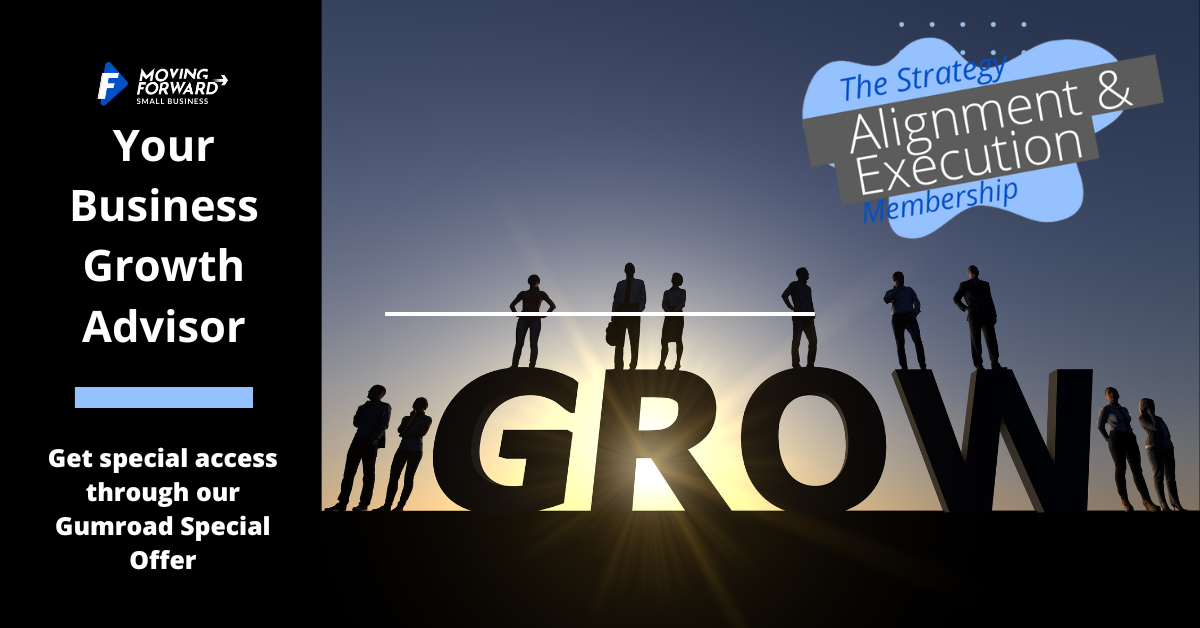Key Highlights
- Discover the difference between annual planning and strategic planning.
- Learn the benefits of short-term and long-term business planning.
- Identify how strategic planning and annual planning work together.
- Find out how to create an effective strategic plan and annual plan.
- Explore how your business can benefit from seeking external support for strategic planning and/or annual planning.
- Let us help you with your annual planning strategy.
Introduction to Annual Planning vs Strategic Planning
The strategic planning process and the annual planning process are both very important types of planning for organizations to succeed. Many businesses mix up the terms “strategic planning” and “annual planning,” even though they mean different things. This confusion can lead to problems in meeting goals and reaching full potential. This blog post will help you understand the key differences between strategic planning and annual planning.
We can help you with your Annual Planning Strategy.
Get Started
Understanding Annual and Strategic Planning
Strategic planning and annual planning are very important for a successful business. They both aim to guide a business toward success. However, they are different in focus, purpose, and time frame. Knowing these differences can help your business improve its planning for both short-term and long-term growth.
Many businesses spend time on annual planning, but they often confuse it with strategic planning. Without a multi-year strategic framework, annual planning cannot be truly strategic. A good strategic plan sets long-term goals and connects them to the company’s overall vision. In contrast, an annual plan looks at the specific actions needed to reach certain objectives within a year.
Definition of Annual Planning
An annual plan details what a business wants to achieve in the upcoming year. It acts like a roadmap that helps the company run day-to-day operations. This keeps the business on track and helps it make smart choices that fit its big goals.
The annual plan breaks down larger strategic goals into smaller steps. It also sets clear goals for teams and people to reach within a set time. Usually, this plan includes forecasts for money, sales targets, marketing efforts, and ways to improve operations.
When businesses follow a good annual plan, they can use their resources well. This helps them reach their strategic goals.
Definition of Strategic Planning
A strategic plan is a clear document that shows a group’s long-term goals, mission, and important priorities. It acts like a guide for the business to reach its future goals. This plan helps make important choices.
Unlike yearly plans that look at short-term goals, a strategic plan usually covers three to five years or even longer. It answers key questions about what the organization stands for, its competition, and what will help it succeed over time.
Through a structured strategic planning process, businesses can understand their main values. They can look at their strengths and weaknesses and spot their opportunities and risks. This helps them create a roadmap for steady growth, even as the market changes.
Key Differences Between Annual and Strategic Planning

Strategic planning and annual planning are both important for a business to succeed, but they are different in some ways. They vary in what they cover, how long they last, and how they impact a business. By knowing these differences, companies can use both plans better. This can help them grow, reach their goals, and handle the challenges in the business world.
Strategic planning looks at the overall picture. It gives a long-term plan for the whole organization. On the other hand, annual planning takes these big strategic goals and breaks them down into smaller tasks that can be done within a year. In short, strategic planning decides where a business is going and what needs to be done, while annual planning shows how to get there and make it happen.
Time Frame Comparison
One main difference between annual planning and strategic planning is the time they cover. Strategic plans look ahead several years, often three to five years or more. This long-term view helps businesses see changes in the industry, spot new chances, and prepare for long-lasting success.
In contrast, annual planning is all about the next year or the next fiscal year. It gives a clear roadmap for reaching short-term goals that help achieve the bigger strategic plan. This shorter time frame helps businesses be quick and flexible to changes in the market or their industry.
In short, strategic planning shows the long-term vision, while annual planning outlines the steps to reach important milestones in that time frame.
Scope and Focus
Strategic planning and annual planning are different in their goals and details. Strategic planning is about the big picture. It looks at where the organization wants to go in the long run, as without a plan of any sort, the organization risks losing direction. This includes things like entering new markets, launching new products, or gaining market share. It also means looking at competitors, understanding what customers need, and finding ways to use the organization’s strengths in the market.
Annual planning, however, is more focused on what can be done in the current year. It includes action plans that show how to reach specific goals. This type of planning identifies the resources needed, decides who will do what, and sets clear goals that are specific, measurable, achievable, relevant, and time-bound (SMART). The goal here is to work effectively and efficiently in the short term.
In summary, strategic planning sets the direction for future success, while annual planning breaks down those big goals into specific actions to make them happen.
Role in Business Growth
- Strategic planning and annual planning are both important for business growth, but they help in different ways.
- Strategic planning sets up long-term growth. It helps identify future chances, prepare for challenges, and compete in the market.
- Annual planning turns this big vision into clear steps that lead to real results. It helps the company grow in a solid way.
- This process includes using resources well, checking performance through key performance indicators (KPIs), and making changes when necessary.
- When annual planning aligns with the strategic planning framework, daily tasks and short-term goals will support the long-term vision.
- This way, everyone in the organization works together toward shared goals. It helps make a bigger impact on the company’s success.
The Importance of Both Plans for Small Businesses
Many small businesses think strategic planning is only for large companies, but that’s not true. Every business, big or small, can benefit from having a clear vision and a solid plan.
Annual planning is just as important for small businesses. It helps them stay organized, focused, and accountable. By setting realistic goals and breaking them into smaller steps, small businesses can work steadily to reach their goals. This approach can improve their operations and increase their chances of success in the market.
Why Annual Planning Matters
Creating an annual plan is not just a task; it is a helpful way to move a business closer to its goals. By spending time and effort on a clear annual plan, businesses can gain many benefits. It keeps them organized, focused, and responsible all year long, making sure everyone works towards the same goals.
One big benefit of annual planning is that it forces businesses to look at their past results. They can learn from what worked and what did not. This helps them make smart choices about future projects. It also allows them to notice areas where they can get better, take advantage of new chances, and reduce risks.
Also, annual planning is important for using resources wisely. By predicting income, costs, and cash flow, businesses can set up an operating budget that matches their goals. This planned financial management helps keep things steady and allows for improved decision-making.
The Value of Strategic Planning
Having a strategic plan is very important for reaching and keeping long-term success. Organizations that focus on strategic planning show that they want to shape their future and take advantage of new opportunities. They plan ahead instead of just reacting to changes in their industry.
Strategic planning helps you understand what your organization can do. It also helps you see outside trends and check out the competition. This overall view lets businesses expect changes in the industry, spot new market needs, and find new chances that can give them an edge.
Additionally, a clear strategic plan helps use resources wisely. By focusing on projects that fit the main goals, organizations can make sure their time, effort, and money go into things that really matter for long-term growth.
Crafting an Effective Annual Plan

An effective annual plan acts like a roadmap. It helps to reach short-term goals while being in line with the main strategic plan. This plan connects long-term dreams with daily work. It allows organizations to make real progress towards what they want to achieve.
To create a strong annual plan, first look at the strategic plan. Identify the main goals to reach within the year. To keep everyone aligned and clear, get important stakeholders involved in the planning process. This helps everyone feel responsible and engaged in the plan.
Setting Achievable Goals
When making goals for the annual plan, it’s important to find a good mix of ambition and realism. This helps to ensure that the goals are doable with the available time and resources. It’s vital that the goals are specific, measurable, achievable, relevant, and time-bound (SMART).
You should break down big objectives into smaller, easier milestones. This step-by-step way of working makes the goals feel less scary. It also helps with tracking how well things are going and keeping accountability. Make sure to check progress against these milestones regularly. Celebrate when you reach milestones, and change plans if needed.
By setting realistic goals and breaking them into manageable milestones, businesses can build energy and inspire their teams to aim for success. This method helps to manage resources and track performance better since you can measure progress against clear, specific targets.
Allocating Resources Wisely
Allocating resources wisely is very important when making an annual plan. Since there are limited resources, organizations need to choose their projects carefully. They should spend money smartly to make the most impact and complete the necessary work effectively.
Start by looking closely at the annual budget. Find places where resources can be used better. This might mean moving funds from projects that are not doing well to others that could grow more. It could also mean simplifying processes to cut down on extra costs.
It’s important to explain the reasons behind how resources are allocated to teams, departments, and stakeholders. This helps everyone understand the process and supports teamwork. It encourages teams to work together efficiently within the budgets given.
Developing a Long-Term Strategic Plan
Creating a long-term strategic plan means you need to think about the future. You should look at where the organization wants to be in the long run. This planning process needs a careful look at the team’s strengths and weaknesses. You also must understand the outside world around the organization.
Start by talking to stakeholders. This includes board members, employees, and customers. Their different views can help make the plan stronger and create a sense of teamwork. Their ideas are important for finding new chances and dealing with possible problems.
Vision Casting for Future Success
Vision casting is key in making a strong, long-term plan. It means creating a clear and powerful statement that describes what the organization wants to achieve in the future. This vision acts like a guiding star, helping everyone know the way forward.
To create this vision, it’s important to understand the organization’s core values, strengths, and weaknesses. You should also look closely at the competition. Doing a SWOT analysis helps to get a complete picture.
After your vision is set, the next step is to develop a strategic roadmap. This roadmap will detail the main strategies to reach the future goals. It should include specific objectives, timelines, and clear ways to measure success. This creates a clear path to follow.
Identifying Key Performance Indicators (KPIs)
Identifying key performance indicators, or KPIs, is very important for both annual and strategic planning. These indicators measure how well strategies are working. In strategic planning, KPIs help support the organization’s goals. In annual planning, they focus on specific objectives for the upcoming year. KPIs give a clear path to follow so we can see progress and make sure the necessary work is being done. Stakeholders use KPIs as important markers to check success and make changes if needed.
Integrating Annual and Strategic Planning
To achieve success in an organization, it is very important to blend annual and strategic planning. This means making sure that short-term actions fit well with long-term goals. Doing this creates a clear roadmap to reach both immediate targets and big-picture dreams.
Strategic planning gives a broad view and sets the long-term direction of the organization. On the other hand, annual planning breaks down the steps and actions that will help meet these strategic goals. By connecting these two planning methods, companies can make sure their daily work supports their long-term plans and strategic priorities.
Ensuring Alignment Between Plans
One important part of combining annual and strategic planning is to make sure both plans work together. The organization’s annual plan should directly support its long-term goals from the strategic plan.
To do this, you need to communicate the strategic direction clearly to everyone in the organization. All departments and teams must understand the main goals and how their work fits into these goals. While this may seem like a lot of work, it’s helpful to share updates on the strategic plan often so that everyone knows what is happening and stays focused.
By linking everyday tasks to strategic goals, you help employees see how their contributions make a difference. This helps them make better choices that lead to the organization’s long-term success.
Adjusting Strategies for Optimal Performance
Even if you plan carefully, unexpected challenges and chances will come up. Strategic planning and annual planning should not be seen as set documents. Instead, they should be seen as guides that can be changed when new things happen.
You should often check both plans and make changes based on how things are going, market changes, and other important factors. This ongoing approach helps organizations stay flexible and ready to take advantage of new chances while lessening risks.
Performance management is very important to keep the organization on track. By watching key performance indicators (KPIs) and checking how you are doing against your goals, you can quickly make changes to improve performance. This ongoing feedback, powered by data and insights, helps ensure that the organization stays on target with its strategic goals and objectives.
Seeking Outside Support
Many organizations plan using their own resources. However, there are clear advantages to getting help from outside experts or firms that focus on strategic planning. Bringing in different views can offer new insights and ideas that might not come up in internal talks.
External consultants have lots of experience with various organizations and issues. They provide an outsider’s viewpoint and can share helpful feedback. They can lead important conversations between board members and stakeholders, and can also help create a strong and practical plan. Working with skilled consultants can really improve the quality of the strategic planning process.
Conclusion
As you handle annual and strategic planning, know that both are very important for your business’s success. Annual planning helps you achieve short-term goals. At the same time, strategic planning helps you create a path for long-term growth. By combining these two, you can get quick wins and plan for the future. This mix helps you adapt, stay creative, and be strong in tough times. Use planning to guide your small business toward success. For help with your annual planning strategy, book a free consultation with us today.
Frequently Asked Questions
What Are the First Steps in Starting Both Annual and Strategic Planning?
The first steps in the strategic planning and annual planning processes are to find important stakeholders and set clear goals and results, also known as OKRs. You should collect ideas from different departments and people. This will help you understand your organization’s strengths, weaknesses, opportunities, and threats better.
How Often Should These Plans Be Reviewed?
A strategic review should happen every year. This helps update and improve your plans. Action plans and milestones need to be checked every few months or even every month. This way, you can see if you are making good progress.
Can Small Businesses Benefit from Strategic Planning?
Yes, small businesses can gain a lot from strategic planning. By setting clear strategic goals and making a plan to reach them, small businesses can get an edge over others. They can better adjust to changes in the market and grow steadily.
How Does a Business Transition from Annual to Strategic Planning?
The process of moving from annual planning to strategic planning is about changing our focus. We go from short-term ideas to having a long-term vision. This involves creating a strategic framework. This framework helps to develop annual plans. It makes sure that our short-term actions support our long-term goals.
What Are Common Pitfalls in Planning and How to Avoid Them?
Common problems in planning are not talking enough, making goals that are too hard, and not keeping track of progress. You can prevent these issues by encouraging open conversations, creating reachable goals, and building a strong strategic planning framework. This framework should have steps to watch and check how things are going.


